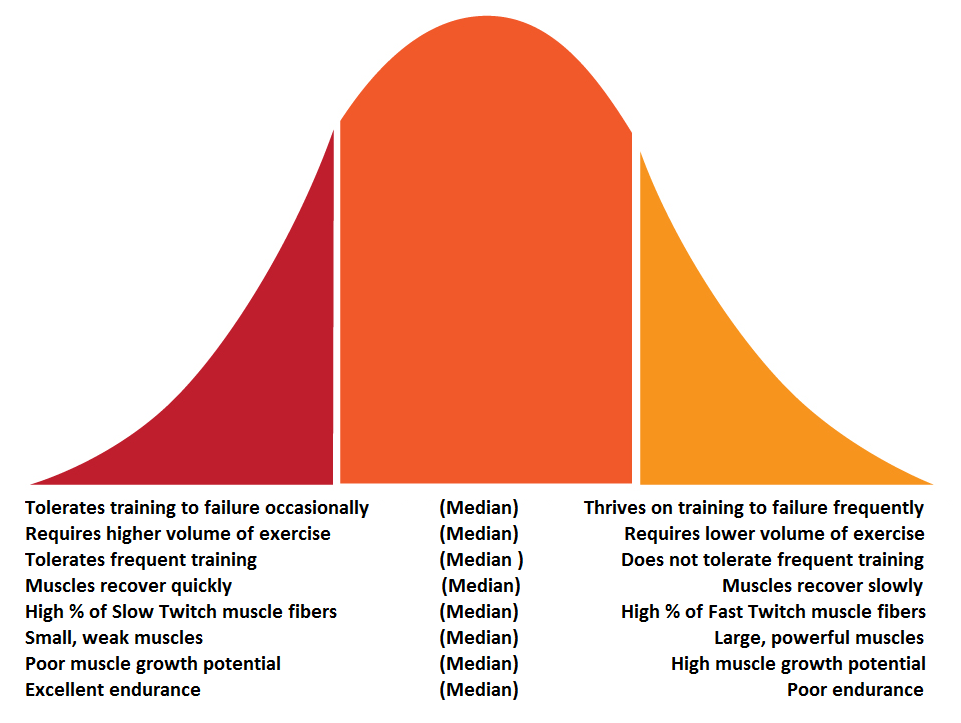Generally speaking we’re all the same. Same physical structure, same bodily functions. But the similarities between you and I likely end there. My blood pressure was 120/70 every time it’s been taken in the past 3 years, I burn fat relatively easy but I’m lucky if I can squeeze out a 0.25 lb. increase in muscle mass from year to year, I work about 80-90 hrs a week and, I’m 36 years old. How do you compare?
Possibly the same in some areas, likely different in them all, and this is only a small sampling of physical characteristics we could compare. Our abilities and limitations vary across a broad spectrum, as do our requirements to improve, maintain, or decelerate the loss of muscle, strength and functional ability.

Inherent traits make us unique. Think of the people in high school who were categorized as “the brain”, “the jock”, or “the artist”. Each got his/her label because they naturally excelled in a particular area or skill. But as “natural” as they were in that one area they likely had to work hard to achieve average success in others—if they achieve success at all.
I don’t call attention to this to shoot down your dreams of physical Superstardom. Fact is most people never actualize their true potential and none of us really know what our limits are. The reason why I bring this up is because people and personal trainers put too much focus on the general—broad brush stroke—training practices when they should be focused on determining individual specific needs.
There is a need for general training routines since there is no way of knowing exactly what a persons individual needs are at the start. General routines set the foundation and can be used as a benchmark to compare future results and progress. A personal trainer for example might have a basic routine they start everyone on for a number of weeks or months and depending upon the trainees results and feedback, they begin to alter their workouts to better align with their individual needs.
The trouble is when people continuously jump from one workout method of the month to the next, and follow routines that were designed for someone other than themselves. Instead they should be analyzing their individual characteristics to determine the proper direction of their training. Approaching training (and nutrition) this way can literally save years of wasted effort.
Though we all don’t have the superior physical abilities to be a champion physique athlete or model nearly everyone has the potential to achieve a relatively strong, lean, and muscular physique if their training, nutrition, and lifestyle are congruent with these objective and satisfies their individual needs. So where do you currently reside on the fitness Bell Curve above? Where does each of your major muscle groups reside on the curve? What does it say about your receptiveness and tolerance to exercise? How can you adjust your training to address these individual characteristics and maximize results?
__________________________________________________________________


